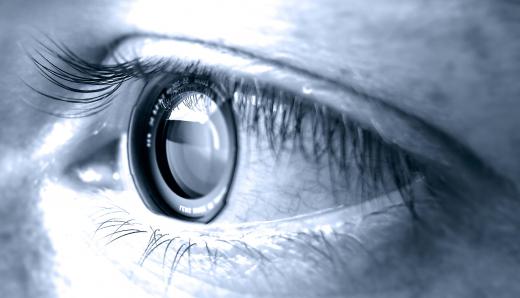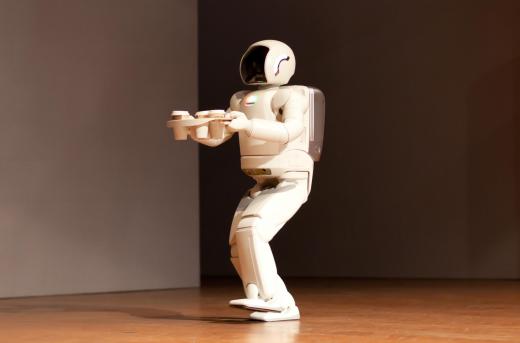What is the Uncanny Valley Theory?
 Mary McMahon
Mary McMahon
The Uncanny Valley Theory is an idea held by some people who specialize in robotics. According to the theory, the more human-like a robot becomes, the more people are drawn to it, until it crosses a line and becomes almost human, stimulating a response of fear, horror, or revulsion. According to proponents of this theory, the applications of robots could be limited by this response. This theory is not universally accepted, however, and additional research is definitely needed.
The theory was proposed by Masahiro Mori, a Japanese robotics expert, in 1970. He referenced the idea that robots would probably someday have an uncanny resemblance to human beings, and that this resemblance might cause people to feel uneasy or upset when interacting with such a robot. The idea is that in a robot which is almost human, non-human traits become glaringly obvious, creating cognitive dissonance in humans interacting with the robot. By contrast, in a robot which is clearly a robot, human-like traits such as arms or eyes are viewed as endearing.

The "valley" in the Uncanny Valley Theory is the presumable dip in a graph charting human responses to robots. Studies have suggested that this valley also appears in visual graphs of response to other human beings when they become sick or severely disabled; people seem to respond to people who are dying in the same way that they might respond to almost-human robots, in other words. In human-human interactions, the response of fear and revulsion appears to be almost universal, suggesting that it may have an evolutionary basis, and proponents of the theory suggest that the same may be at work in human-robot interactions.

Robots are certainly a topic of interest for many people, if the popularity of robots in science fiction films and television shows is any indicator. Extremely realistic robots are portrayed in a wide variety of ways in science fiction, with some stories suggesting that robots will become evil, while others indicate that robots will simply be another technological tool for human use. Recognizing the Uncanny Valley Theory, some science fiction authors have played upon the idea of eerie almost-humans in their work.
When robotics developers address the Uncanny Valley Theory in their work, they often do so by designing robots with clear robotic characteristics, with the goal of avoiding something which looks and feels too human. Other people in the field reject the idea of the Uncanny Valley Theory, arguing that people might fear robots because they are new and potentially very powerful, but not because of how they look or act.
AS FEATURED ON:
AS FEATURED ON:












Discussion Comments
Now I know how Susan Calvin felt in Isaac Asimov's "ROBOT" series. It's just a machine, folks. it can't hurt you unless it's been programmed to.
Maybe in time, and a period of adjustment people will accept human looking robots. For now, my theory is that we are skeptical.
For the most part we know a human, and can interpret human movement, gestures, and facial expressions. With a robot though, it is a whole new and different game. We might not know what can come next, and put us constantly on guard, which is very stressful. I think it is better to keep robots not human looking.
Post your comments